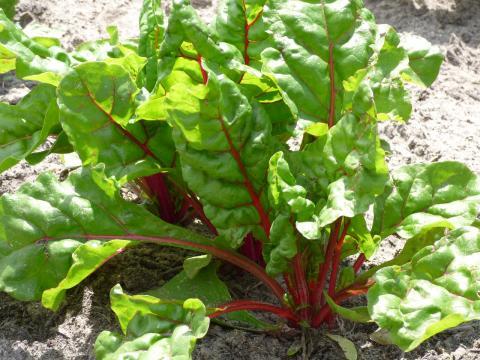
Join Basmati.com every week for a Q&A session with one of Basmati’s practitioners, Melissa Hill (FDN-P)! We know that there is a lot of confusing information out there, which can make applying health advice overwhelming. Sometimes, it’s best to ask a practitioner directly, so each week we’ll cover a common health question!
Do you have a health question you’d like to ask? Write to us at editors [at] basmati [dot] com and your question could be chosen and featured in a future column!
Q. What are oxalates? And how could they be affecting my health?
A. Oxalates are naturally occurring substances found in plants, animals, and humans. Oxalates, if not properly metabolized, can bind with minerals in the body and form sharp crystal-like structures. These sharp structures then travel through our blood stream and can lodge themselves into different tissues and organs, causing pain and inflammation. This can lead to calcium-oxalate kidney stones in some people and in other people a variety of inflammatory/painful conditions like:
- fibromyalgia
- frequent urinary tract infections
- vulvodynia
- inflammatory bowel disease
- hypothyroidism
- asthma
- osteoporosis
- fatigue
- rashes/hives
- and many others.
Oxalates also act as anti-nutrients, which can bind with minerals such as calcium, magnesium, zinc, and iron, preventing their absorption in the body.
Q. Where do they come from?
A. Oxalates are found naturally in many plants, like leafy greens, nuts, seeds, and grains. The body also produces oxalates internally as the end product of normal cellular metabolism. Common food sources of high oxalates are: spinach, almonds, chia seeds, Swiss chard, buckwheat, amaranth, rhubarb, soy, peanuts, cashews, chocolate, carob -- things that you normally would consider ‘healthy’ foods, but if your body isn’t metabolizing the oxalates, then you can end up feeling tired and in pain and not know why.
Q. Why are oxalates a problem for some people and not for others?
A. In healthy individuals, moderate quantities of oxalates shouldn’t be an issue. However, the following factors can influence the ability of the body to handle oxalates: heavy antibiotic use, lack of beneficial bacteria, lack of digestive enzymes, poorly functioning gallbladder (poor fat metabolism), and chronic candida/fungal infections.
Normally, not much oxalate is absorbed from our food, but the level of absorption has to do with the health of the gut. If there is inflammation in your gut or intestinal permeability (leaky gut), excess oxalates in your food can slip through the intestinal wall cells and become a problem. When oxalate travels through the gut, it normally should encounter certain bacteria that will digest it and break it down into a substance that is not irritating or harmful. In this way, most people are able to safely metabolize and process oxalate out of the gut through the stool without any problems. In fact, there is a specific strain of bacteria in the gut, oxalobacter formigenes, that is responsible for this transformation of oxalates into a harmless substance. Unfortunately, these bacteria can be killed by antibiotics and/or may not have been colonized properly in some children to begin with. Those with a history of heavy antibiotic use or recent antibiotic use may be at much greater risk from dietary oxalate. Overuse of antibiotics may also pose a problem since this can reduce or eliminate the oxalate-degrading bacteria in the intestines. Chronic stress and eating GMO and processed foods are also huge contributors to impaired gut health.
If you are struggling with any of these pain related health issues or if you find that after going gluten free, drinking more green smoothies, and ‘trying everything’ you still can’t get better or even feel worse, then consider looking at the role of oxalates in your diet and the health of your gut. There are many resources available for those trying a low oxalate diet and for those trying to heal their gut.
Q: What can I do to reduce my oxalate count?
A: The first step would be to reduce your intake of high oxalate foods. A great resource for categorized lists of oxalate content in different foods can be found here. This site also has recipes with low oxalate counts to get you started. The next step would be to restore the health of your gut to improve your digestive capacities, handle any underlying fungal infections or candida overgrowth, and repopulate it with good bacteria. As it turns out, the health of your gut and digestion is at the root of many health challenges.








